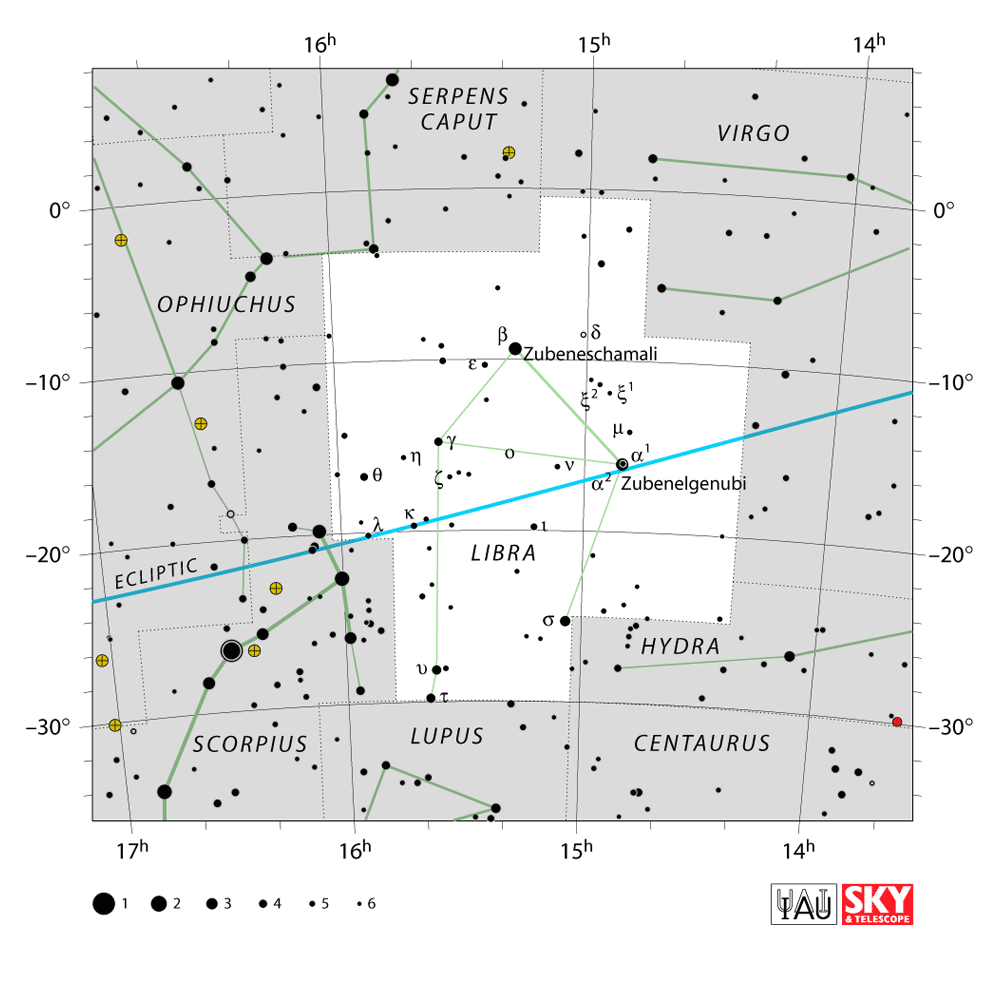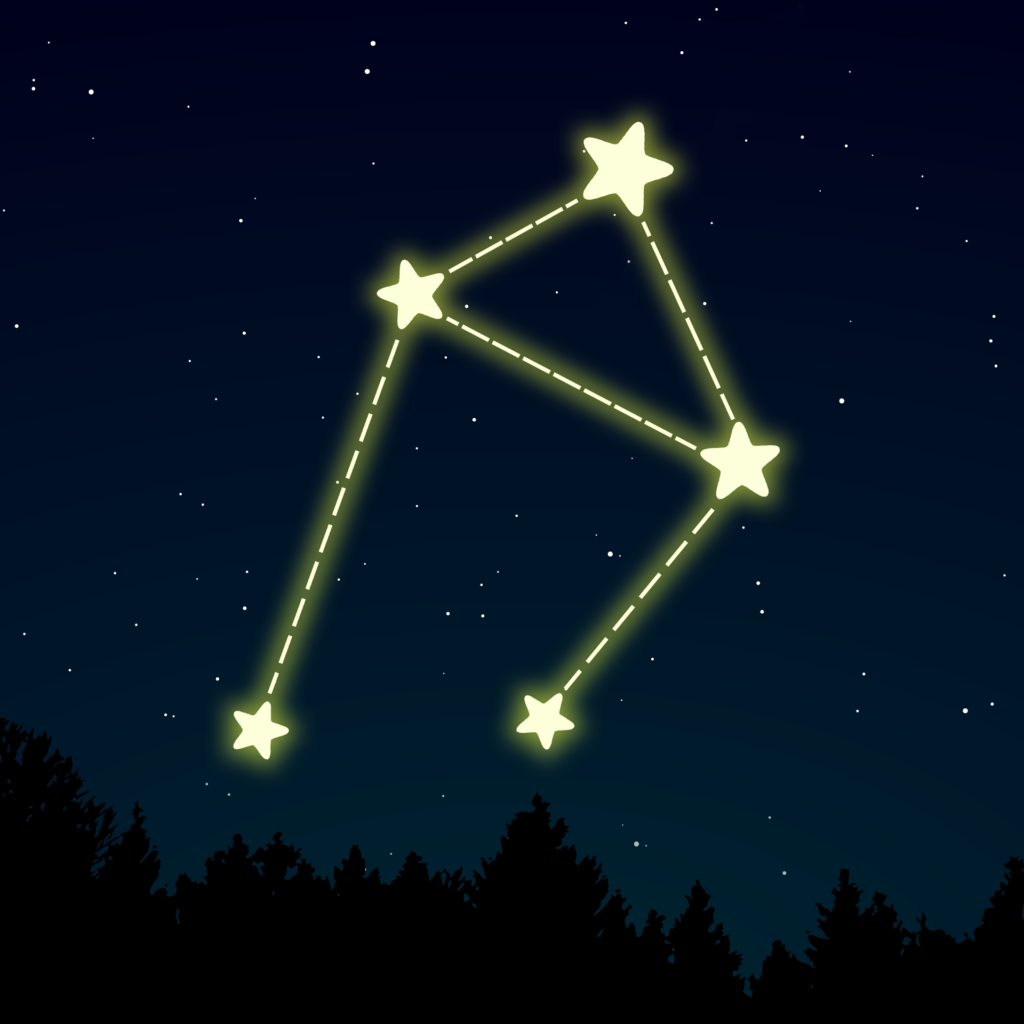Stargazing with Libra
© freepik/tartila
The constellation Libra, often symbolizing balance and justice, graces the night sky as one of the 88 officially recognized constellations. Nestled between Virgo and Scorpius, Libra is characterized by its faintness, lacking first-magnitude stars, yet it holds significant cultural importance. Positioned in the southern sky, it is part of the zodiac constellations, originally documented by Ptolemy in the 2nd century CE.
Within Libra, three stars are known to host planets, while it doesn’t boast any Messier objects. The brightest star in the constellation is Beta Librae, also known as Zubeneschamali, shining with an apparent magnitude of 2.61. The constellation is home to four officially named stars, as recognized by the International Astronomical Union (IAU): Brachium, Zubenelgenubi, Zubenelhakrabi, and Zubeneschamali. Despite its subtle luminosity, Libra’s celestial presence and stellar inhabitants contribute to the rich tapestry of the night sky.
In astrology, the constellation is linked to the autumnal equinox, symbolizing the scales of balance and representing the transition from summer to fall in the Northern Hemisphere. Libra’s stars may not be the brightest, but they contribute to the celestial tapestry, inviting stargazers to explore the stories and myths woven into the night sky.
HISTORY OF LIBRA

The history of the Libra constellation is deeply rooted in ancient civilizations, where it served as a symbolic representation of balance, justice, and the changing seasons. Libra is one of the twelve zodiacal constellations and has been observed and referenced for thousands of years.
In Babylonian astronomy, Libra was associated with the scales of justice and was originally part of the larger Scorpius constellation. The Babylonians, who were keen sky observers, identified the constellation as the “Claws of the Scorpion.” The concept of balance and justice became intertwined with Libra, reflecting the importance of fairness in societal governance.
In ancient Greece, Libra was also connected to the scales of justice. However, the Greeks recognized it as the claws of the mighty scorpion Scorpius. The association with the scales became more prominent during the Roman period. The scales held by Astraea, the goddess of justice, were often depicted as the constellation Libra.
Libra’s significance further evolved with the development of the zodiac in Hellenistic astrology. The constellation became a crucial marker for the autumnal equinox, representing the point at which the Sun crosses the celestial equator, signalling the beginning of fall in the Northern Hemisphere.
During the Renaissance, as interest in astronomy and astrology flourished, Libra gained recognition as one of the zodiacal constellations. Its association with justice and balance continued to influence cultural and artistic depictions.
ASTRONOMICAL FEATURES

The Libra constellation, although relatively dim, possesses some notable astronomical features that add to its celestial allure:
ALPHA LIBRAE
Zubenelgenubi, designated as Alpha Librae, stands as the brightest star in the Libra constellation, and its name holds a rich historical and cultural legacy. The moniker is of Arabic origin, translating to “the southern claw,” emphasizing its historical association with the claws of the Scorpius constellation, as Libra was originally perceived as the scorpion’s claws in Babylonian astronomy.
This binary star system is located approximately 77 light-years away from Earth. The primary star, Zubenelgenubi A, is a blue-white subgiant star, shining with a luminosity greater than the Sun. Its companion, Zubenelgenubi B, is a yellow dwarf star. These two stars orbit each other, creating a dance across the cosmic stage. The binary nature of Zubenelgenubi adds to its astronomical interest, as observing such systems provides valuable insights into stellar evolution and dynamics.
Zubenelgenubi’s brightness makes it a prominent point in the night sky, although it may not be as conspicuous as stars in some other constellations. Its position in the constellation contributes to the celestial balance, symbolically aligning with the scales associated with this constellation.
In astrological traditions, Zubenelgenubi has been linked to qualities of tact, diplomacy, and balance, reflecting the symbolic significance of Libra. Its appearance in the evening sky, often visible during the fall months, invites contemplation and exploration.
BETA LIBRAE
Zubeneschamali, designated as Beta Librae, is a distinctive star in the Libra constellation, contributing both astronomical intrigue and cultural significance to the night sky. Its name has Arabic origins, translating to “the northern claw,” highlighting its historical connection to the claws of the Scorpius constellation. This binary star system, situated approximately 160 light-years away from Earth, consists of two stars that orbit each other in a cosmic ballet.
The primary component, Zubeneschamali A, is a blue-white giant star with a luminosity significantly greater than that of the Sun. Its companion, Zubeneschamali B, is a yellow dwarf star. The presence of these two stars in close proximity offers astronomers an opportunity to study the dynamics and interactions within binary systems, contributing valuable insights to our understanding of stellar evolution.
Zubeneschamali’s distinct bluish tint distinguishes it in the night sky, although it may not be as bright as some other stars. Its position within Libra, symbolically associated with the scales of justice, aligns with the constellation’s historical representations.
In astrological traditions, Zubeneschamali is linked to Libra’s themes of balance, harmony, and fairness. It is associated with qualities of charm, sociability, and artistic expression, reflecting the cultural and symbolic richness embedded in the constellations.
Observing Zubeneschamali in the northern hemisphere is particularly noteworthy during the autumn months when Libra becomes visible. Its presence contributes to the celestial aesthetics, inviting skygazers to explore the stories and symbolism woven into the night sky.
GLIESE 581
Gliese 581, a red dwarf star located in the constellation, is a celestial object that has captured the attention of astronomers due to its potential to host habitable exoplanets. Situated approximately 20.3 light-years away from Earth, Gliese 581 is part of a system known as the Gliese 581 system or HO Librae.
The star Gliese 581 is smaller and cooler than our Sun, belonging to the spectral class M3V. Its relatively dim luminosity makes it challenging to observe with the naked eye, but it has become a focal point of astronomical studies, particularly in the search for exoplanets within its orbit.
One of the most significant discoveries associated with Gliese 581 is the detection of multiple exoplanets, some of which reside in the star’s habitable zone. The habitable zone, often referred to as the “Goldilocks zone,” is the region around a star where conditions may allow for the existence of liquid water—a key ingredient for life as we know it.
Gliese 581d, in particular, has been of interest due to its location within the habitable zone. Although it is a Super-Earth with a mass several times that of Earth, its potential for liquid water has made it a candidate for further exploration in the search for extraterrestrial life.
However, the habitability of Gliese 581d and other exoplanets in the system remains a subject of ongoing research and debate within the scientific community. The complexities of planetary atmospheres, surface conditions, and other factors contribute to the intricate puzzle of understanding the potential habitability of exoplanets.
NGC 5897
NGC 5897, a globular cluster nestled within the Libra constellation, stands as a captivating celestial jewel in the night sky. Located around 40,000 light-years away from Earth, this stellar congregation forms a spherical structure, a harmonious collection of stars bound together by gravity.
This globular cluster exhibits a rich tapestry of stellar diversity, with stars of varying ages and compositions. NGC 5897’s relatively loose and open appearance distinguishes it from more densely packed globular clusters. It spans a diameter of about 75 light-years, offering astronomers a captivating celestial vista.
Discovered by the British astronomer William Herschel on March 14, 1784, NGC 5897 has since been a subject of continued interest for astronomers seeking to understand the dynamics and evolution of stellar systems within our Milky Way galaxy.
The cluster’s location within the constellation adds to its allure, providing stargazers with an opportunity to explore its intricacies during the autumn months when Libra becomes visible in the night sky. NGC 5897’s position in the cosmos also allows astronomers to study its relationship with the galactic environment and gain insights into the broader dynamics of our galactic neighbourhood.
Observing NGC 5897 through telescopes reveals a dense core surrounded by a scattering of stars, each contributing to the overall brilliance of the cluster. The study of globular clusters like NGC 5897 contributes to our understanding of stellar populations, galactic structure, and the evolutionary processes shaping the cosmos.
VISIBILITY AND SEASONALITY

As the Libra constellation graces the celestial sphere, its visibility and seasonality offer a celestial spectacle for avid stargazers. Positioned between Virgo and Scorpius, Libra unveils its stars and stories during specific times of the year, adding a touch of cosmic balance to the night sky. This brief exploration delves into the seasonal appearances of the constellation, inviting observers to discover the constellation’s celestial wonders during its optimal viewing periods.
NORTHERN HEMISPHERE
- Spring: Libra rises in the eastern sky during the spring months. As the season progresses, it becomes more prominent and reaches its highest point in the southern sky during the late spring.
- Summer: While still visible in the early summer, Libra gradually moves westward and lowers on the horizon as the night progresses.
- Autumn: By autumn, Libra becomes less visible, eventually setting in the western sky.
SOUTHERN HEMISPHERE
- Autumn: Libra begins to rise in the eastern sky during the autumn months and becomes more visible as the night progresses.
- Winter: Libra is well-placed for observation during the winter months, reaching its highest point in the northern sky.
- Spring: While still visible in the early spring, Libra gradually moves toward the western horizon.
METEOR SHOWER

The May Librids, the exclusive meteor shower linked to the Libra constellation, was reportedly initially observed on May 5, 1929, by members of the American Meteor Society. This meteor shower has a brief activity span from May 1st to the 9th, reaching its climax on the 6th. During this peak period, observers can anticipate witnessing a maximum of 2 to 6 meteors per hour.
